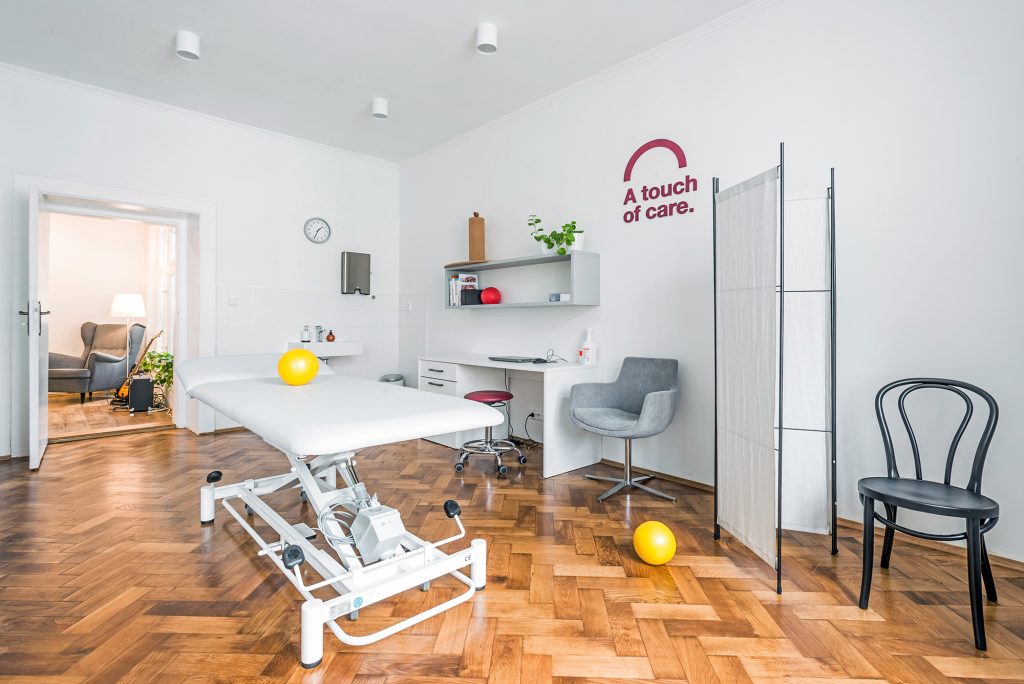Treatment with High-Intensity Laser BTL 6000 HIL 2
Modern Technology in Practice
The High-Intensity Laser (HIL) is a therapeutic device that uses laser beams for treatment. With a maximum power of 20W, it allows energy to penetrate deep into tissues without damaging the skin. The treatment is effective, completely painless, and has no side effects. At Fyzio Svět, we use the state-of-the-art BTL 6000 HIL 2 device, equipped with a scanner and temperature monitoring of the treated area.
Promoting Healing
The laser works by healing damaged tissue through targeted light (photons) that forms the laser beam. These photons penetrate several centimeters deep and are absorbed by cell structures—specifically the mitochondria. The cells use the laser’s energy, which influences various biochemical reactions. The result is faster healing, increased tissue metabolism, and a strong analgesic effect, all without the need for medication.
Greater Penetration and Energy Transfer
If you’re still wondering why you should try laser therapy with us, the answer is simple: it’s effective and painless. The key difference from low-power lasers (common in rehabilitation centers) is its enhanced thermal and analgesic effects. It allows for much deeper penetration into tissues and a higher intensity of laser radiation. The increased heat improves blood circulation in the treated area without the risk of tissue damage. The enhanced blood flow delivers more oxygen to the tissue and helps flush out waste products more quickly. At the same time, the laser stimulates the immune system’s response, helping to combat inflammation. The enhanced analgesic effect is achieved by stimulating nerve endings, blocking pain signals, and promoting the release of natural opioids, providing immediate and long-lasting relief. Another reason we frequently use the laser is its biostimulatory effect, which accelerates cell division, collagen production, blood vessel regeneration, and enhances cellular energy metabolism—significantly speeding up the healing process.
4 Key Effects of the HIL Laser
- Analgesic – reduces pain
- Anti-inflammatory – reduces inflammation
- Biostimulatory – promotes healing and immune response
- Thermal – deeply heats tissue
Advantages of HIL Over Low-Power Lasers
- Significantly higher therapeutic dose
- Ability to treat larger areas, saving time
- Fewer applications needed due to the higher energy dose
- Greater depth of penetration
- Even distribution of energy and precise targeting of the treatment area with the scanner
- Real-time temperature monitoring with graphical display on the scanner screen
What Conditions Can HIL Laser Treat?
If you’re unsure whether your health issue is suitable for HIL laser treatment, here’s a list of indications:
- Scar healing, best applied 6-8 weeks post-surgery
- Treatment of poorly healed or problematic (active) scars
- Muscle and tendon strains, tears, ruptures, sports injuries, hematomas, and swelling
- Tendon and joint inflammation (tendinitis, bursitis)
- Tennis or golfer’s elbow
- Jumper’s knee (Osgood-Schlatter disease)
- Achilles tendon pain
- Heel spurs and plantar fasciitis
- Joint pain, arthritis, osteoarthritis, cartilage damage
- Chronic back pain
- Jaw joint pain
- Tinnitus
- Other conditions: carpal tunnel syndrome, tarsal tunnel syndrome, eczema, acne, Dupuytren’s contracture, postherpetic neuralgia, burns, facial nerve paralysis
When HIL Laser Treatment Is Not Suitable
Treatment with the high-intensity laser is not recommended if:
- You have a pacemaker
- You are being treated for epilepsy, cancer, deep vein thrombosis, or are on anticoagulants or have a bleeding disorder
- You have completed radiotherapy within the last 6 months
- You have a chronic infection, fever, or serious illness
- You have systemic diseases like lupus or uncontrolled diabetes
- The treatment area has significant bleeding, is tattooed, or has very dark pigmentation
- You are sensitive to light or taking medication that affects light sensitivity
- You are pregnant, and the treatment area is the abdomen or lower abdomen
- You have been on corticosteroids for a long time or within the last 3 months
- You have impaired sensation in the treatment area
- The treatment involves prohibited areas like the thyroid gland, other endocrine glands, or areas near the eyes or genitals







